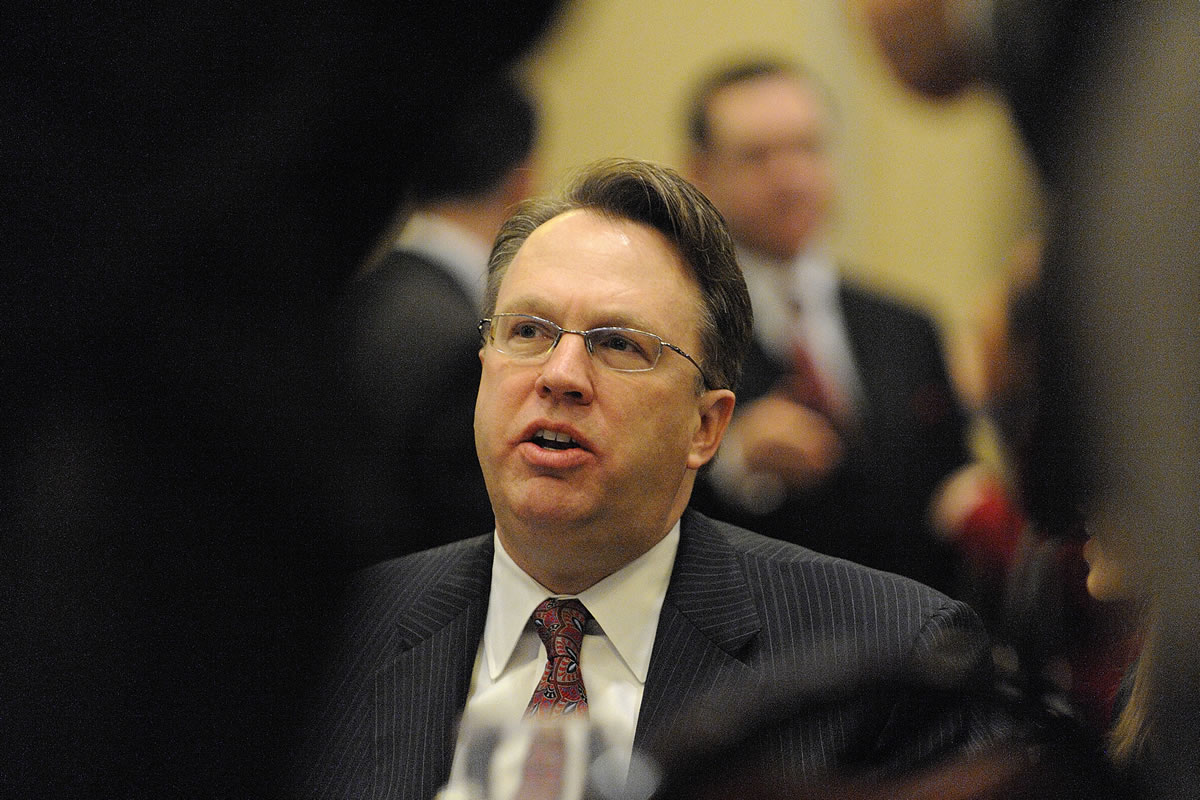The Federal Reserve Bank of San Francisco’s top official offered reassurances Wednesday that the Fed would continue its aggressive stimulus tools for as long as they’re needed to guide the nation’s economy through its uneven recovery.
John C. Williams, president and chief executive officer at the Federal Reserve Bank of San Francisco, repeated Federal Reserve Chairman Ben Bernanke’s statement made in June that the Fed could begin to reduce its purchase of securities later this year, eventually ending its asset purchase program around the middle of next year. Williams spoke at the Embassy Suites hotel in downtown Portland to dozens of business and banking leaders.
Williams emphasized that such an action would be based on “substantial improvement” in the economy, and said the unemployment rate remains a valid measure of economic improvement, even though it overlooks people who have left the workforce.
The regional Federal Reserve leader estimated that the national unemployment rate, which was 7.4 percent in July, would drop to about 7 percent by the middle of next year. Even when it cuts its purchase of long-term securities, Williams said the
Fed would provide a continued economic stimulus by maintaining its low interest rate to banks for as long as the unemployment rate is above 6.5 percent. He estimated that the nation won’t reach that unemployment rate until the first half of 2015.
“I am convinced that our policies have been instrumental in reviving the economy and avoiding what could have been an economic meltdown,” Williams said in a speech hosted by the Federal Reserve. “But the time is approaching when our economy will have enough momentum on its own without the need for additional monetary stimulus.”
The nation is adding some 200,000 jobs a month and has regained 6.5 million jobs lost during the downturn, and that job growth is taking place across a broad range of industries, Williams said. But, he added, government stimulus programs that were crucial in launching recovery have been replaced by government austerity measures that are having the opposite effect.
“Fiscal policy at the federal level has become a major factor holding back the economy,” Williams said. “It’s as if the economy were trying to run while carrying a bag of rocks on its back. The fact that it’s still moving forward is a testament to the underlying strength of the private-sector recovery.”
Williams discussed at some length the challenges facing economists and policymakers in trying to assess the health of today’s economy using the unemployment rate. The unemployment calculation has been a generally accurate measure of cyclical changes in the economy over time, but the rate is now affected in significant ways by larger structural changes in the nation’s economy and workforce, he said.
In today’s economy, the share of the working-age population with jobs has scarcely increased even as the unemployment rate has declined from its recessionary peak of 10 percent, Williams said. And participation in the labor force has dropped to below 64 percent, its lowest level in almost 30 years. That decline is due to “long-term demographic trends,” Williams said, including baby boomer retirements, young people extending their educations and workers moving onto disability rolls. But an improving economy will move at least some of those workers back into the workforce, which will improve its accuracy as an economic measuring tool over time, he said.
Responding to audience questions, Williams said that Bernanke’s leadership helped the nation avoid many of the fiscal policy mistakes it made in the Great Depression of the 1930s. Under Bernanke, the Fed took aggressive stimulus measures to avoid deflation, and the central bank also moved quickly to restore public confidence in the banking system by initiating “stress tests” that assured the public that banks were sound, Williams said. On a recent trip to Europe, he found policy officials were still struggling to find ways to rebuild public confidence in the banking system.




